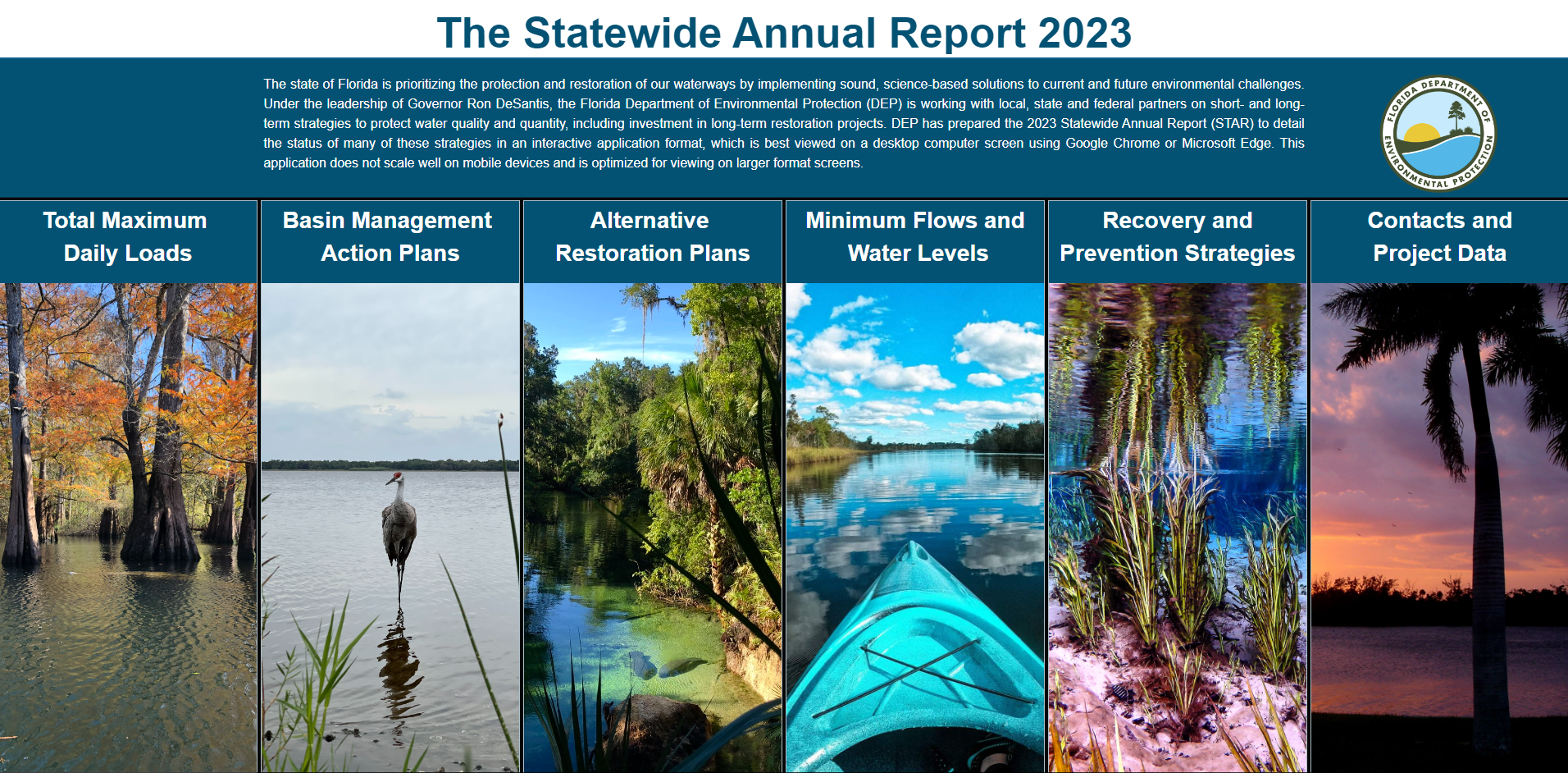2023 Statewide Annual Report on Total Maximum Daily Loads, Basin Management Action Plans, Minimum Flows or Minimum Water Levels, and Recovery or Prevention Strategies
The Florida Department of Environmental Protection is committed to protecting Florida’s water resources, which are vital to Florida’s environment, economy, and communities. The department works collaboratively with the Governor and Legislature, Florida’s water management districts, our partner state agencies, local governments, the public, and other stakeholders to implement projects and programs to protect and restore our state’s iconic water resources. In fulfillment of Section 403.0675, Florida Statutes (F.S.), the department has prepared its annual report detailing the status of many of these key programs, including total maximum daily loads (TMDLs), basin management action plans (BMAPs), minimum flows or minimum water levels (MFLs), and recovery or prevention strategies.
This year's annual report is available via this interactive application which presents statewide summaries for TMDLs, BMAPs, and MFLs—all of which are displayed alongside explanations of these programs, providing additional clarity and context. Users can easily explore specific waterbodies, geographic areas, individual stakeholders, or projects of interest. All project data—or selected and filtered subsets of project data—are available for download from within the application.
Background Information
When a river, lake, estuary, or spring does not meet state water quality standards, the department determines a water quality restoration target known as a TMDL that will restore the waterbody so that it meets its standards. TMDLs address a specific impairment for a waterbody; therefore, a waterbody may have multiple TMDLs to address different pollutants. This report describes the status of TMDLs adopted as of Dec. 31, 2023.
The department may develop a BMAP, in collaboration with local stakeholders, to achieve one or more TMDLs. BMAPs may be developed for surface waters and groundwater-fed springs. The management actions listed in the BMAPs comprise local projects proposed and committed to by counties, municipalities, special districts, private industrial facilities, wastewater utilities, the Florida Department of Transportation, commercial agricultural operations, and other stakeholders. The stakeholders provide details of their projects to department.
Section 373.042(1), F.S., defines MFLs as the point at which further water withdrawals would be significantly harmful to the water resources or ecology of the area. As a part of fulfilling their mission and statutory responsibilities, the water management districts establish MFLs for priority waterbodies within their boundaries. MFLs are used both in planning for future water uses and in regulating water withdrawals. For waterbodies that are below their minimum flow or level, or are projected to fall below their minimum flow or level within 20 years, the water management district is required to implement a recovery or prevention strategy to ensure the MFL is maintained over the long term.



